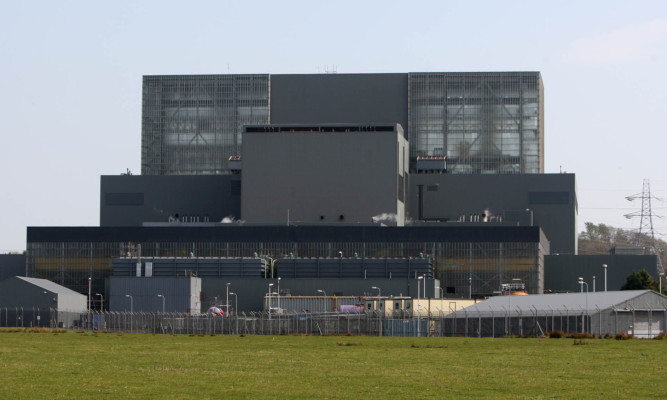Cracks have been found in bricks around the core of a nuclear reactor at Hunterston B power station.
Operator EDF said it has “no safety implications” and will not affect the operation of the reactor.
Three cracked graphite bricks were found during a planned maintenance inspection of 6,000 that make up the core of one of two nuclear reactors at the site.
The operator said the cracks were predicted due to the age of the reactor.
Two cracked bricks were found during maintenance of the North Ayrshire site’s other reactor in October last year.
Station director Colin Weir said: “Nuclear safety drives everything we do. This means we work within very large safety margins. This applies to graphite bricks too.
“The level of cracking which is considered reasonable is far below anything which would affect the reactor’s safe operation.
“It is accepted by our regulators and materials experts that cracks will occur in some of the bricks and that the core will lose some of its mass as part of the normal ageing process.
“The observations were anticipated and are in line with our understanding, so our view of the best estimate lifetime planning date of 2023 has not changed.”
EDF said it was publicising the information “as part of its commitment to openness and transparency”.
Further inspections are to look at more of the graphite core and, if more cracks are found, EDF said it will inform the public.
A statement from the company said: “As part of routine inspections, engineers looked at part of the reactor’s graphite core. Three graphite bricks were found to be cracked.
“This is known as keyway root cracking and was predicted to start happening at this point in the station’s lifetime.
“It does not affect the operation of the reactor and the findings have no safety implications and are well within any limits for safe operation.”
The nuclear power station began operating in 1976 and was originally scheduled to be shut down in 2011, but this was extended to 2016.
EDF Energy later said a technical and economic evaluation of the plant confirmed it could operate until 2023.
WWF Scotland director Lang Banks said: “Despite the assurances given by the nuclear industry, with cracks now found in both reactors it’s clear the problem is spreading and that we can expect this facility to become even more unreliable in the future.
“News of more cracks in the country’s ageing fleet of nuclear power stations underscores why we’re right to be taking steps to harness cleaner, safer forms of energy.”
